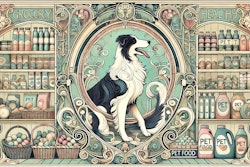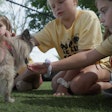
Data released by Abinpet, in collaboration with Instituto Pet Brasil, projects revenues of R$78 billion (US$14.44 billion) for Brazil's pet sector in 2025 — a modest 3.5% increase over the R$75.4 billion (US$13.96 billion) recorded in 2024. This marks the sector's lowest growth rate since 2019, signaling a critical moment for an industry long seen as resilient, even in economic downturns. But here's the key point: it's not just the economy.
Macroeconomic headwinds hit hard
Multiple factors are converging to create a challenging environment: a rising dollar exchange rate inflates the cost of key international commodities like animal and vegetable meals; persistent inflation above the Central Bank's target and weaker domestic consumption erode purchasing power; and a heavy tax burden continues to weigh on competitiveness and investment capacity.
Production declines break long-term growth cycle
Beyond revenue, the most alarming signal is the decline in production volume. Abinpet and IPB data show that in 2024, pet food output fell to 4.055 million tons, a −0.6% contraction — the first in years. Projections for 2025 anticipate a further decline to 3.933 million tons, a steeper −3.7% drop. This interrupts the sustained growth seen from 2015 to 2022 and raises red flags across the value chain: factories facing underutilization, supply chain disruptions, and mounting pressure to optimize processes and costs.
Global markets offer a silver lining
Despite domestic setbacks, Brazil's pet sector reached a record US$580.58 million in exports in 2024 — a 29% surge over the previous year — indicating that international demand remains a key lifeline.
Our independent analysis: demand factors matter
While economic factors clearly play a role, we know from other markets that 2024 was marked by a sharp deceleration globally. However, economic conditions alone do not fully explain why an essential industry like pet food — typically resilient in past downturns — is now faltering. There is always an underlying demand-side factor accompanying these cycles. What is striking is that Brazil's local industry does not seem to have identified what that factor is. Understanding shifts in consumer behavior, pet ownership preferences, purchasing patterns, or category substitution is crucial — and ignoring these will leave the sector vulnerable even when macro conditions improve.
Final takeaway
The Brazilian pet industry stands at a crossroads. Economic pressures are real, but not the sole cause of slowdown. To ensure long-term sustainability, leaders must not only advocate for tax reform and efficiency gains but also invest in deep-dive demand insights. Without this, the industry risks mistaking symptoms for causes — and missing the opportunity to regain its growth momentum when the economy rebounds.














